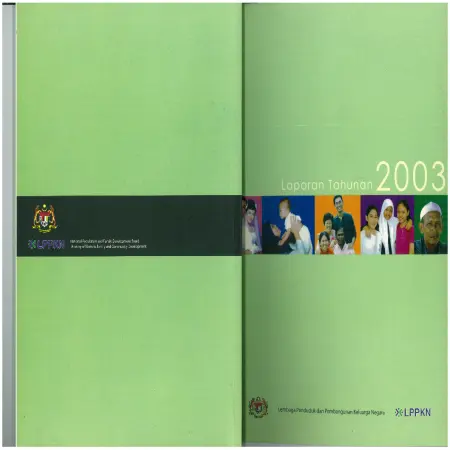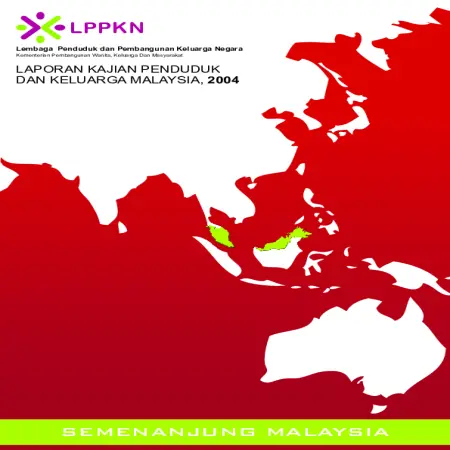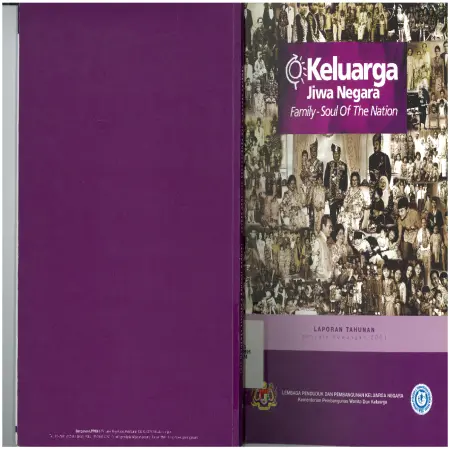Browse by Author
Results for Family Name : "Lembaga Penduduk dan Pembangunan Keluarga Negara, Malaysia"
|
|
Tingkah laku seks di kalangan warga 45 tahun dan ke atas
Item Type: Research Report
Editor:
Year: 00/00/2006
Abstract: An opinion survey on 'Sexual Behavior Among Citizens 45 Years and Above' which was first conducted by the Human Reproduction Division (BRM) was conducted in the Klang Valley area from February to June 2003. The 'Convenience Sampling' sampling method was used where respondents who meet certain criteria fill in the questionnaire themselves. A total of 473 respondents consisting of 50.1% Malays, Indians (26.6%) and Chinese (23.3%) where men (53.5%) outnumber than women (46.5%). The majority of respondents comprised the age group of 50-59 years (41.25%). From the 220 female respondents, only 7.3% took hormone replacement therapy. The results of the study found that the importance and satisfaction of sex decreases with age where it is more pronounced among women than men. The frequency of sexual intercourse is performed in the range of 4-8 times a month (46.3%). Although only 16.7% of respondents had sex-related problems, 70.9% of them did not know the source of help and treatment for their problems. Among those who received treatment, 56.4% chose to seek modern treatment. 55.7% of respondents with sexual problems have at least one chronic disease. A total of 85.6% disagreed and looked for another partner as a way out of sex -related problems. Expectations for better sex in the future are still high at 69.1%. In conclusion, for middle-aged and above despite the declining importance of sexual intercourse, their right to access to knowledge and services related to sexual problems needs to be addressed immediately, especially by medical practitioners, especially the Human Reproduction Division and LPPKN in general. A systematic and ‘gender-sensitive’ approach can help overcome the problem of family institutional breakdown and problems related to incest.
|
|
|
|
|
|
Laporan Kajian Penduduk dan Keluarga Malaysia, 2004: Semenanjung Malaysia
Item Type: Research Report
Editor:
Year: 00/00/2004
Abstract: The Malaysian Population and Family Survey (MPFS) is a series of studies conducted by the National Population and Family Development Board (NPFDB) every ten years since 1974. This report of the Malaysian Population and Family Survey 2004, Peninsular Malaysia is divided into six main sections, namely population background and households, marriage and fertility, reproductive health and health practices, family life, adolescents, the elderly and singlehood. Analysis as well done by making a comparison with previous MPFS studies and statistical data from the Department of Statistics Malaysia.
|
|
|
|
|
|
Laporan Kajian Penduduk dan Keluarga Malaysia, 2004 : Sabah
Item Type: Research Report
Editor:
Year: 00/00/2004
Abstract: This report of Malaysian Population and Family Survey 2004 (MPFS-4), Sabah is the result of the findings of the 4th Malaysian Population and Family Survey in Sabah and has been divided into six main sections; population background and households, marriage and fertility, reproductive health and health practices, family life, and adolescents, elderly and singlehood.
|
|
|
|
|
|
Laporan Kajian Penduduk dan Keluarga Malaysia, 2004 : Sarawak
Item Type: Research Report
Editor:
Year: 00/00/2004
Abstract: This report of the Malaysian Population and Family Survey 2004, Sarawak is divided into six main sections, namely population background and households, marriage and fertility, reproductive health and health practices, family life, adolescents, the elderly and singlehood. Analysis as well done by making a comparison with previous MPFS studies and statistical data from the Department of Statistics Malaysia.
|
|
|
|
|
|
Wanita hari ini: anak atau kerjaya 2002-2003
Item Type: Research Report
Editor:
Year: 00/12/2003
Abstract: The participation of women in the labor force has increased from 37.0 percent in 1971 to 42.0 percent in 1991 and 46.9 percent in 2001. This increase is directly not only increase the number of women working but working spouses. The growing number of working couples has raised some challenges that need to be addressed wisely. Among these challenges is the increasing needs of child care services, maid and time management in discharging its responsibilities as a wife, mother and employee, and that is as important as the son and daughter-in-law for who still have parents and parent-in-law. This study is to explore the extent to which women today give preference between career and family, whether they want to increase the number of children or career development, and the factors that influence their choice. The study sample includes 2.909 women working in the public and private sectors who are 40 years and under, are married and have at least one child aged under 13 years. Overall, the mean number of children a woman is owned by a total of 2.4 people. Meanwhile, the mean ideal number of children who think they are up to 4 people. Nearly 14.0 percent of working couples in conflict between family and career. Due to child care problems, 8.3 percent of women had to quit work and 7.8 per cent had to take leave without pay. New initiatives and implemented if there is a desire to boost the female employees to increase the number of children or not, such as subsidized child care costs, while the policy stops working women, child care services in the workplace, child care services in the area of residence, and flexible working hours.
|
|
|
|














